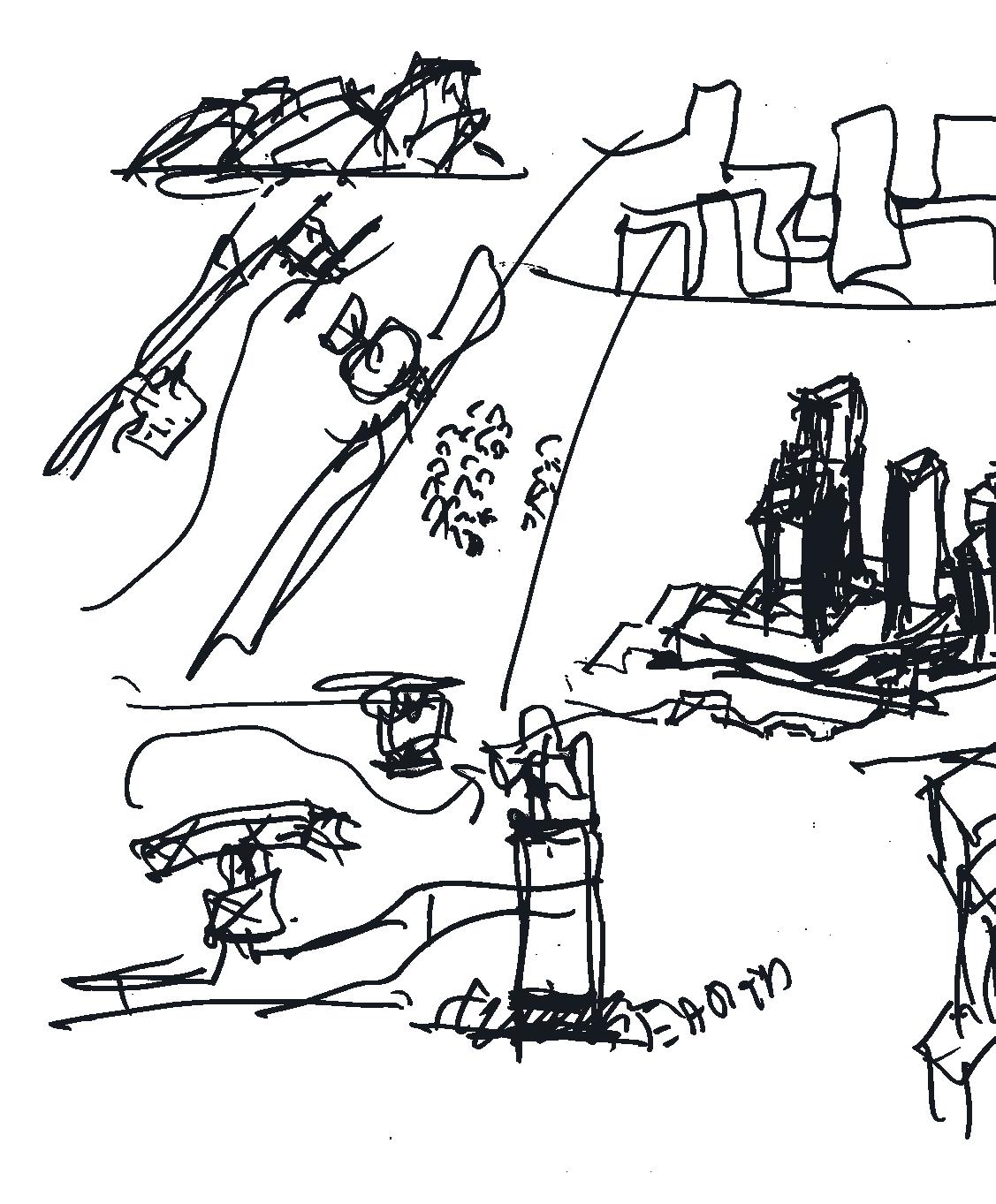
“The convergence of ideas about the immediate future that is rapidly occurring in today's world embodies my dream: an architecture without boundaries of space or time, existing purely as an ideological construct. It is a notion that transcends the physical, suspended in the realm of the mind, in a concept that can change everything, where anything is possible.”
Massimiliano Fuksas
When Massimiliano picks up his marker pen to explain his idea...
Sketches occupy a distinctive and irreplaceable place in the Fuksas studio. These preliminary drawings are not mere lines on paper; they are the spontaneous and rapid reflections of an architect’s mind, capturing the essence of complex architectural decisions in a few deft strokes.
The sketching process serves as an intimate and immediate conduit between the abstract world of ideas and the tangible realm of form and space, embodying the architect’s knowledge, sensibility, and experience in its purest form. It allows Massimiliano to distill his multifaceted thought processes into a visual language that is both simple and profound. Every line, curve, and shadow on paper contains many considerations: structural integrity, spatial functionality, aesthetic harmony, and contextual responsiveness. Unlike digital tools, which often require a series of intermediate steps and adjustments, the hand-drawn sketch is a direct translation of the architect’s vision, offering an unfiltered view of his creative psyche.
One of the most compelling attributes of sketches is their ability to convey complex ideas swiftly and effectively. In the early stages of design, speed is crucial. Architects must generate and evaluate numerous concepts to identify viable solutions. Sketching provides a means to rapidly explore these ideas, facilitating a dynamic and iterative design process. This fluidity is essential for fostering creativity and innovation, as it encourages architects to experiment with different forms, configurations, and compositions without the constraints imposed by more rigid, technical drawing methods.
Moreover, the tactile experience of sketching – the feel of the marker pen against paper, the resistance of the surface, the variation in line weight – contributes to its efficacy. This physicality creates a profound connection between the architect and their work, allowing for a nuanced expression of ideas that digital mediums often struggle to replicate. The immediacy of this interaction enhances cognitive flow, enabling architects to channel their thoughts directly onto the paper with minimal interruption.
Sketches have an emotional and historical significance in Massimiliano’s professional activity. We can certainly consider them a testimony of Massimiliano’s trajectory, as they capture the evolution of his ideas from conception to realization.
These drawings become archives that preserve the creative process for future reflection and study. The uniqueness of each sketch lies not only in its visual content but also in the personal imprint of the Massimiliano’s hand, which gives it character and authenticity. They synthesize knowledge, sensitivity, and experience in a few strokes.
Massimiliano always says that he would like to be able to design an architecture without time and space; he has certainly been searching for it for fifty years. But when I see in this book all this collection of ideas, of strokes, of intentions, decontextualized of any information, scale, or other details that may limit their expression, he has certainly succeeded. This book is undoubtedly a collection of architectures detached from time and space, a supraterrestrial space where his deepest concerns and all his sensibility live.
Ramon Prat
































